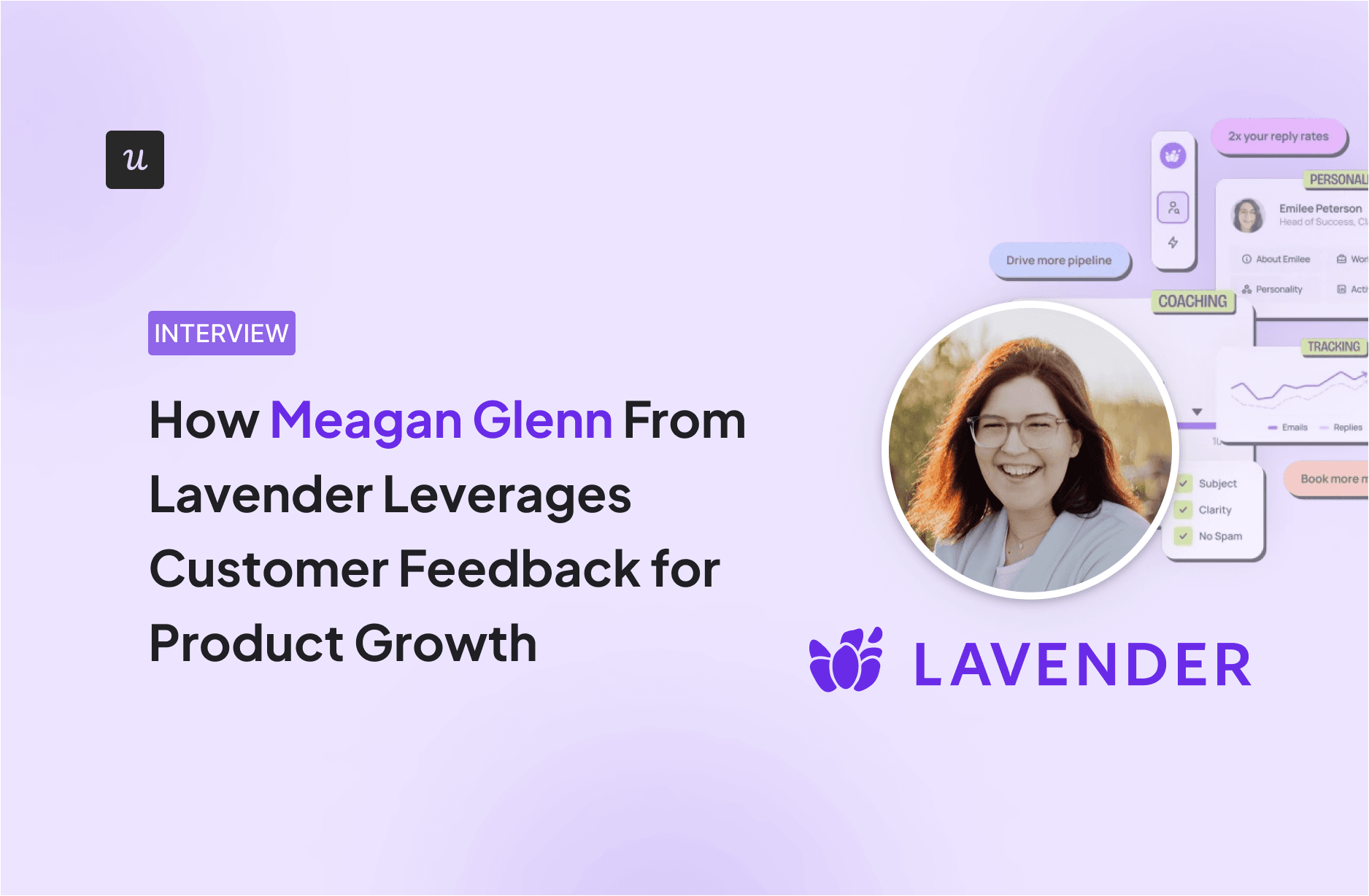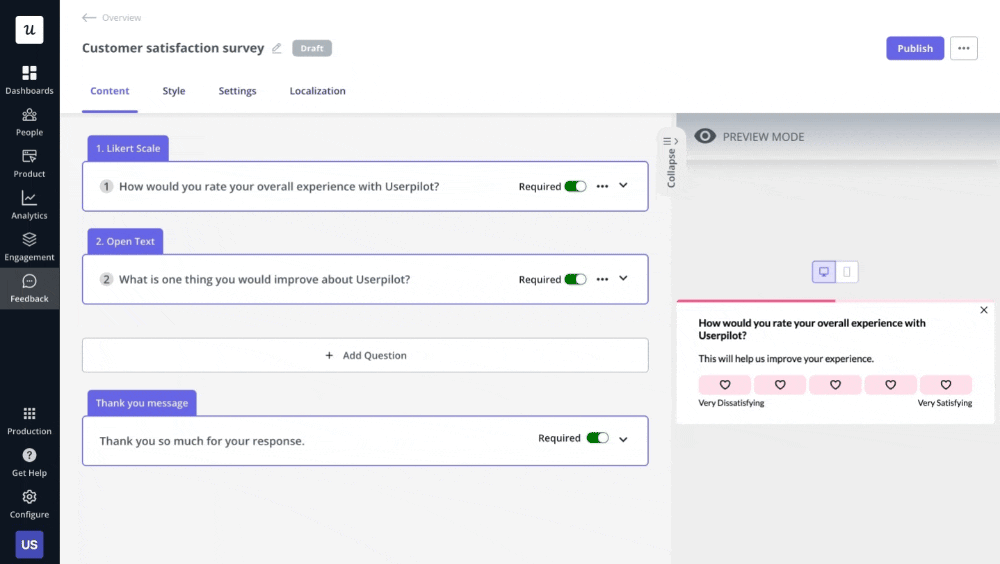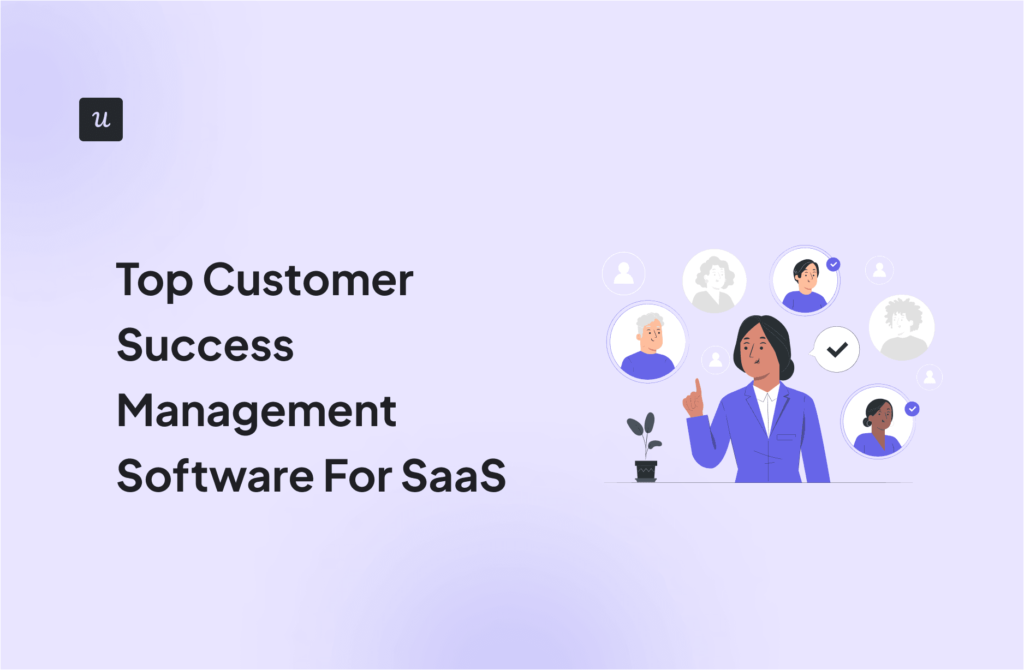
How Meagan Glenn From Lavender Leverages Customer Feedback for Product Growth
Customer feedback can be a goldmine of valuable insights for SaaS companies seeking growth. But how does one actually go about collecting feedback, prioritizing it, and using it to make key product decisions?
Meagan Glenn, Senior Program Manager (Success and Product) from Lavender, an AI-powered email assistant and a Userpilot customer, lays it out for us in this interview. Glenn delves into different ways for leveraging feedback, managing negative responses, common mistakes companies should avoid, and much much more.
Let’s dive in.
Try Userpilot Now
See Why 1,000+ Teams Choose Userpilot

Insights from Meagan Glenn: leveraging customer feedback for growth
Let’s go over the questions we asked Meagan one by one.
What role does customer feedback play in the growth of a SaaS product?
Customer feedback is critical for understanding pain points and satisfaction across your user base. Both of these directly influence product development and help keep up with market trends.
How can SaaS companies leverage feedback to increase product growth?
- Feature development: Product feedback can directly help with feature prioritization, allowing product teams to focus on what users want.
- Retention: Addressing pain points can increase user satisfaction, which overall reduces churn and increases customer retention.
- Product advocacy: When users see their feedback implemented, they feel more connected to the product and brand.
How can companies use customer feedback to influence the product roadmap?
Product feedback should be categorized and reviewed to identify trends. The trends can help ensure that the roadmap aligns with customer needs and business goals.
What are the best channels to collect customer feedback, and why are they effective?
In-app surveys perform the best for feature-related feedback, or to identify a pulse on user satisfaction. They perform well because they are at the moment of interaction.
Email surveys are a good second if you are aiming to reach those outside of your app (admins for example). They tend to meet people where they are.
User interviews are great for in-depth insights. They provide the most growth for your product and can reveal a lot in a short period of time.
Editor’s note: Here’s an in-app customer satisfaction survey created using Userpilot. You can also create such a survey without coding, customize it to match your brand style, and translate it into more than 130 languages. Book a demo to learn more.

Which type of surveys are crucial for SaaS companies to trigger and why?
Product-market fit (PMF) surveys allow growing SaaS companies to see if their product is meeting market needs and expectations.
Customer Satisfaction Score (CSAT) should be used after user interactions to gather real-time feedback, and surface concerns quickly.
Net Promoter Score (NPS) can help gather pulse checks throughout the lifecycle of a customer but isn’t always the best indicator of customer health.
How do you differentiate between valuable feedback and noise?
Valuable feedback usually comes from power users or those who have a deep understanding of the product. It’s easy to tell if the feedback aligns with trends or the overall product vision. Noise can be radically different feedback, or against the product vision.
How do you prioritize which feedback gets implemented first?
Feedback that impacts usability and functionality is prioritized first, especially when it impacts a large user base. From there, potential ROI, business impact, and long-term goals help guide prioritization.
How should SaaS companies handle negative feedback or feature requests that are not feasible?
Negative feedback should always be taken into consideration and handled with care. Communicating clearly about product capabilities is important, as well as providing workarounds when they are available.
Editor’s note: Userpilot enables its users to categorize customer feedback by tagging responses from NPS surveys. This will help to identify recurring responses and pinpoint those that require urgent attention. Book a demo to learn more.

How should companies handle conflicting feedback from different customer segments?
Attempt to segment down further. By segmenting down by demographics, or even usage, you get a better picture of why the feedback is relevant to that segment.
Can you share examples of how customer feedback has directly influenced business decisions at Lavender?
One of the biggest challenges when writing a cold email is how you will optimize it for a reply. With Lavender, we aim to bring personalization data to the user within the Lavender extension.
When creating Lavender 3.0 (our new extension), we conducted user interviews, leveraged feedback from our uninstall forms, and leveraged feedback from our Product-market fit survey to build a better version of Lavender.
We’re now in a beta testing phase and expecting to launch in May 2024!
How frequently should SaaS companies seek feedback from customers?
Customer feedback should be coming in daily from various channels. At Lavender, we have a daily influx through our CSAT, NPS, and uninstall flow.
How do you measure the success of your customer feedback strategies?
You can measure success based on user engagement and feedback on changes made from user suggestions.
What are some common mistakes SaaS companies make when collecting or acting upon customer feedback?
A huge mistake is not acting on the feedback, or taking it as an insult to the product they have built. Feedback helps us improve, so we should look at it as an opportunity to grow.
Another common mistake is prioritizing the wrong feedback; for example, the outliers.
What are some effective strategies for encouraging customers to provide feedback and/or increasing survey response rates?
The most effective way we have found at Lavender is to meet users where they are. If your users are in-app, send in-app surveys. If your users are in the inbox, send email surveys. In our case, we also leverage direct feedback on quarterly check-ins with our CS team.
To increase survey responses, we’ve also outlined clearly how the responses will impact product development.
How can one ensure that customer feedback is effectively communicated to relevant teams?
Creating a culture that promotes feedback sharing starts by encouraging sharing in places that your team is at – for us that is Notion and Slack. We send that to Productboard and share it in a weekly team huddle, then analyze it, and track it at roadmap planning.
Is there anything regarding this topic that I didn’t ask that you’d like to talk about?
Creating a feedback culture is probably the most important part of this.
When we share customer feedback internally, we aim to explain the ROI it would have for the business. We often will share things like Total Contract Value (TCV), customer pain points, what workarounds they have tried, and what it would open for them if we implement it.
Userpilot – the best tool for in-app customer feedback
One thing is certain – quality customer feedback can do wonders for a company’s growth. However, using a subpar feedback tool can hinder the process of collecting and analyzing feedback seamlessly. With Userpilot, this problem is eradicated.
Here’s how Userpilot can help:
- Create in-app surveys no-code: Customize the predesigned survey templates available (CES, CSAT, PMF – you name it) or create one from scratch.

- Localize the surveys for global markets: Auto-translate surveys to different languages to increase survey response rates. Userpilot supports 130+ languages!

- Trigger to the right segments: Display your in-app surveys to your entire user base or a specific segment. The latter will help you collect more targeted feedback.

- Analyze performance with visual dashboards: View key metrics like survey completion rate and average completion time. The NPS dashboard visualizes the NPS score along with the percentage of promotes, passives, and detractors.

- Automate the frequency of surveys: To be on top of customer sentiment, you need to collect feedback frequently. With Userpilot, you can automate this process (as shown in the image below).

- Send email surveys via integrations: Even though Userpilot is primarily an in-app feedback tool, you can use its two-way integrations (HubSpot and Salesforce) for survey email marketing. Use these tools to send email surveys based on engagement and event data captured in Userpilot.

Interested in what you’re reading? Book a Userpilot demo to learn more or sign up for a free trial (no credit card details needed).
Conclusion
This wraps up our interview with Meagan Glenn on how to leverage customer feedback for product growth. To help you succeed with feedback collection and analysis, you need a trustworthy tool by your side.
And there’s no better feedback tool than Userpilot. Book a demo to see it in action.








